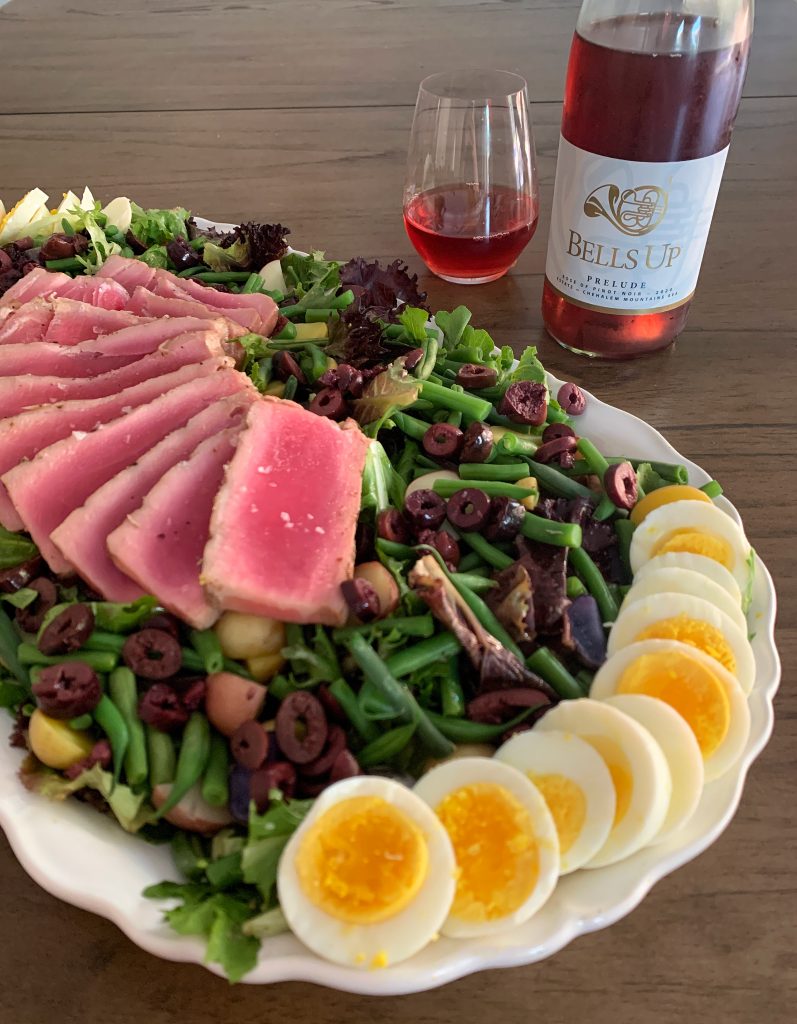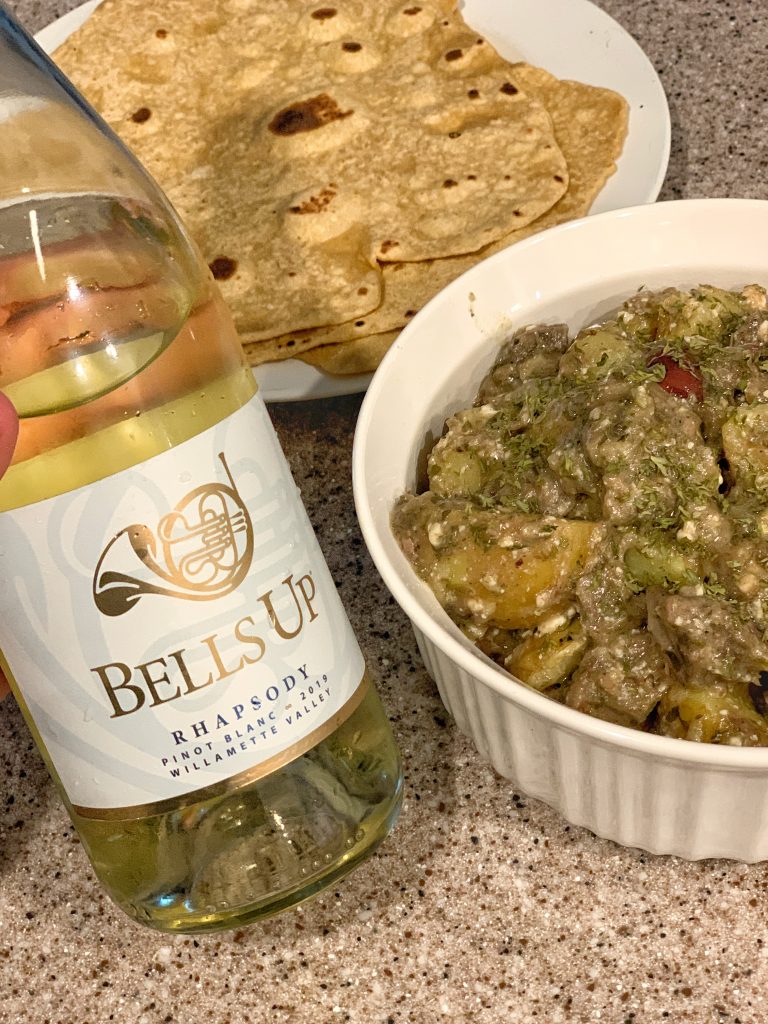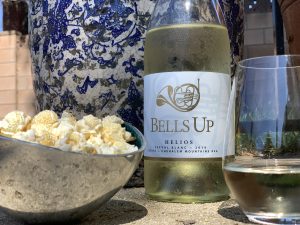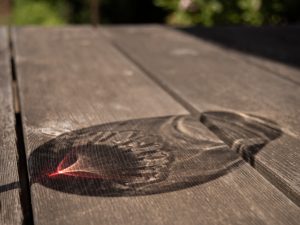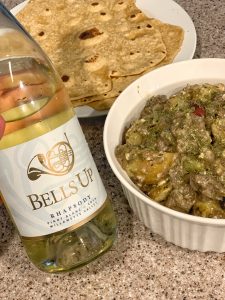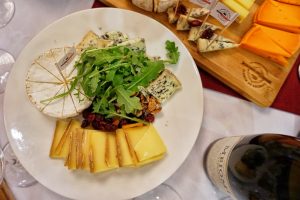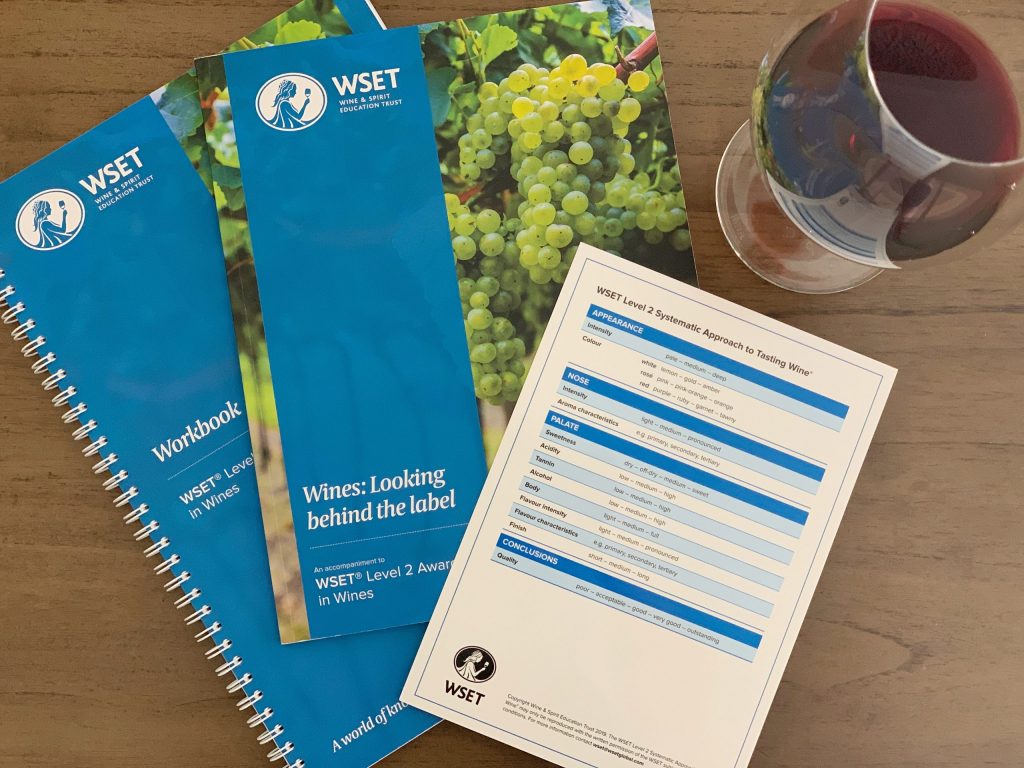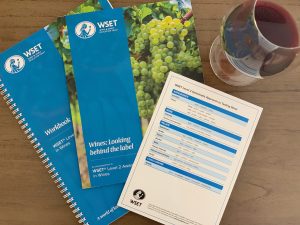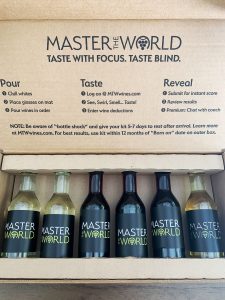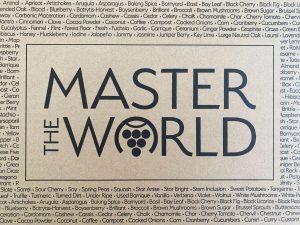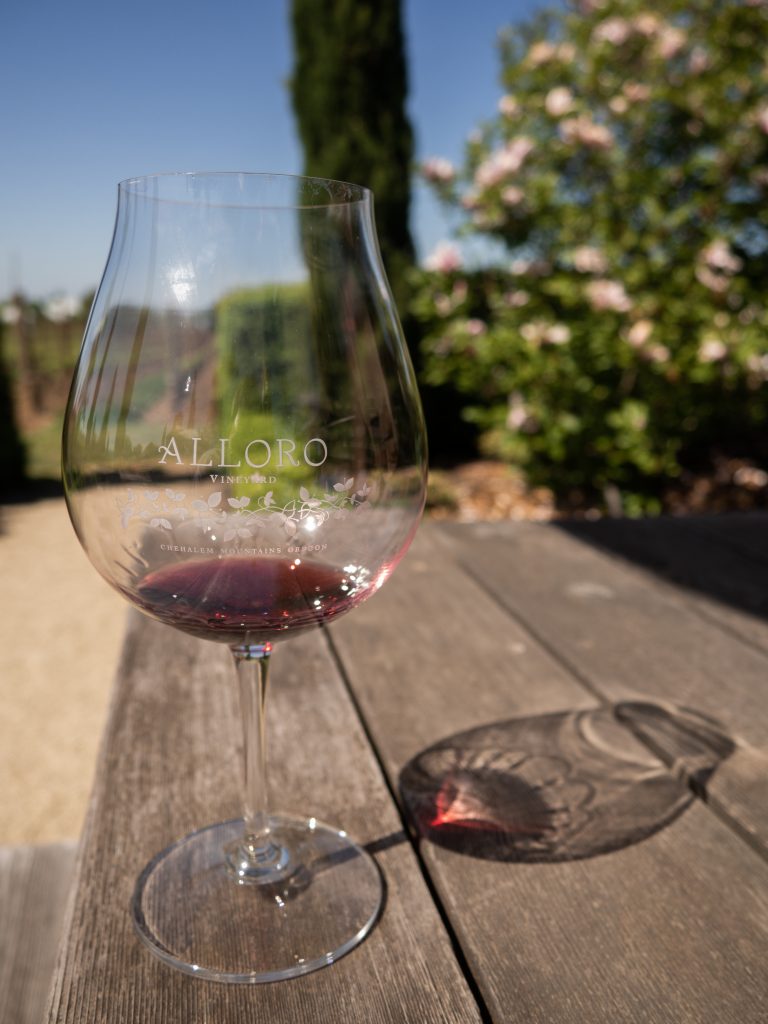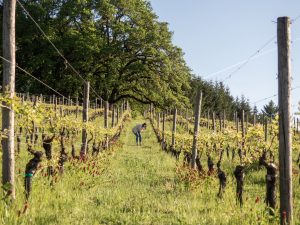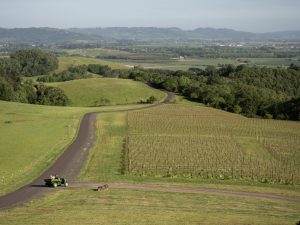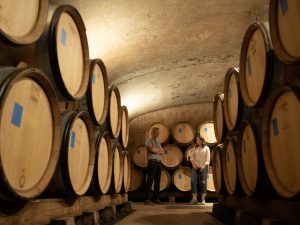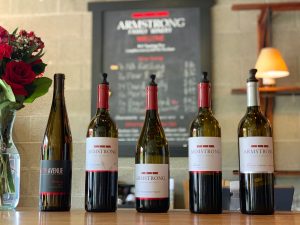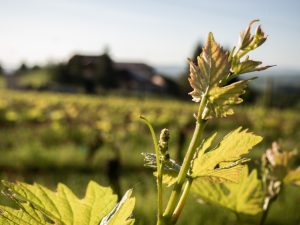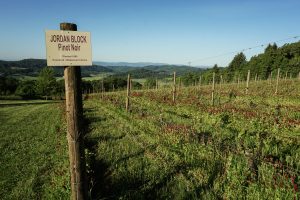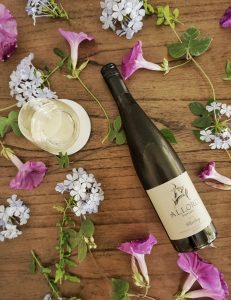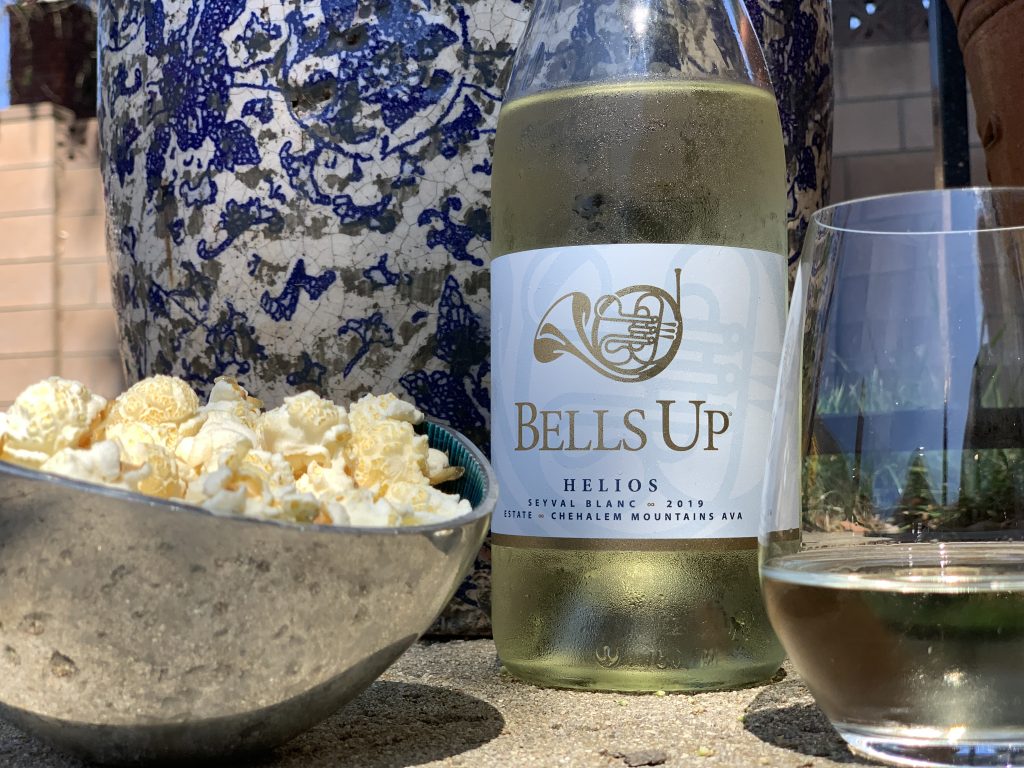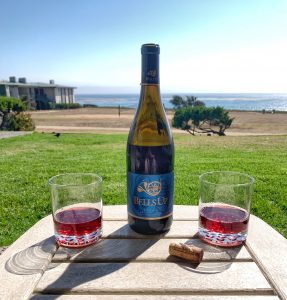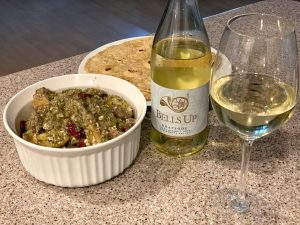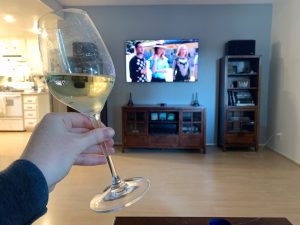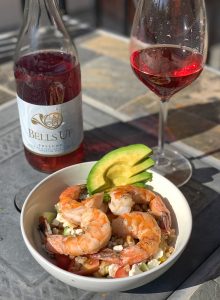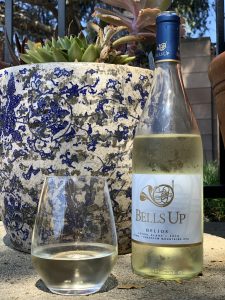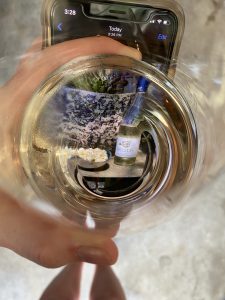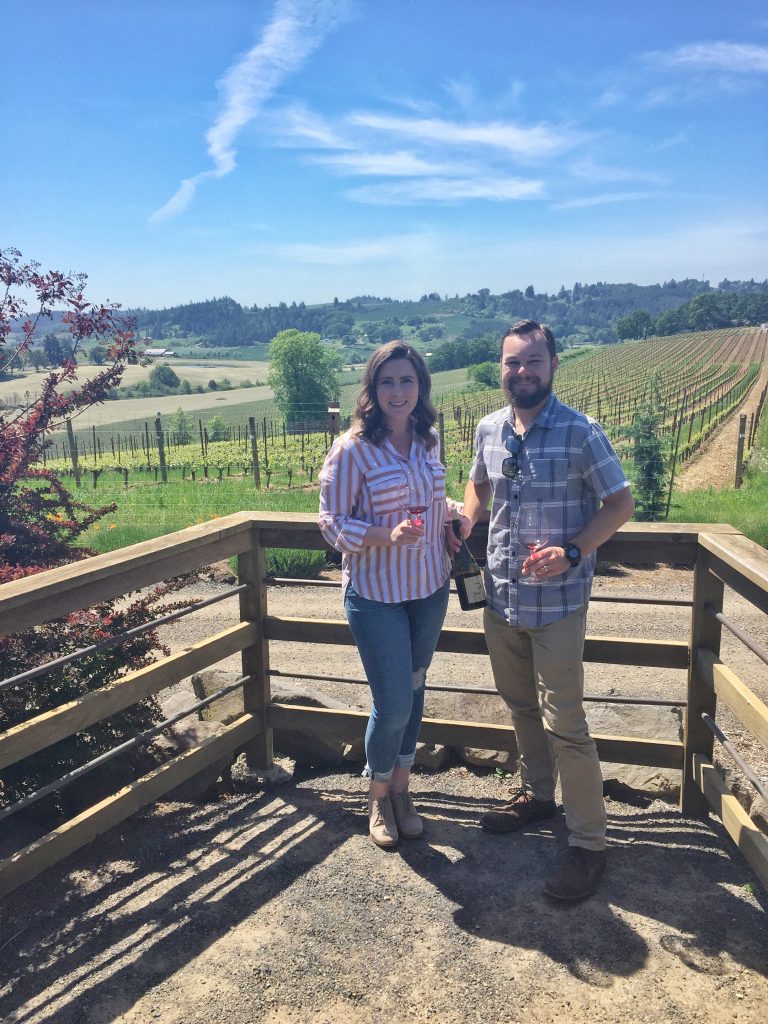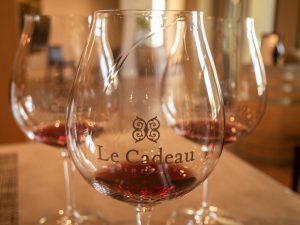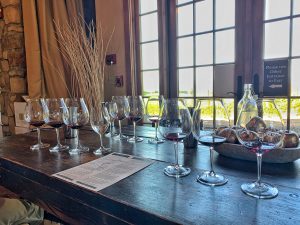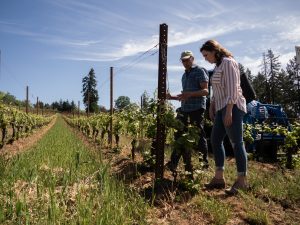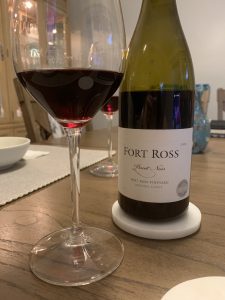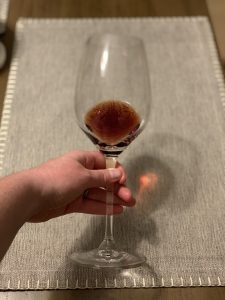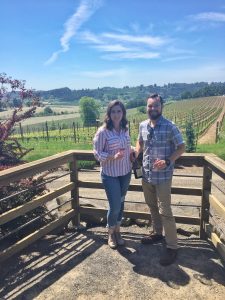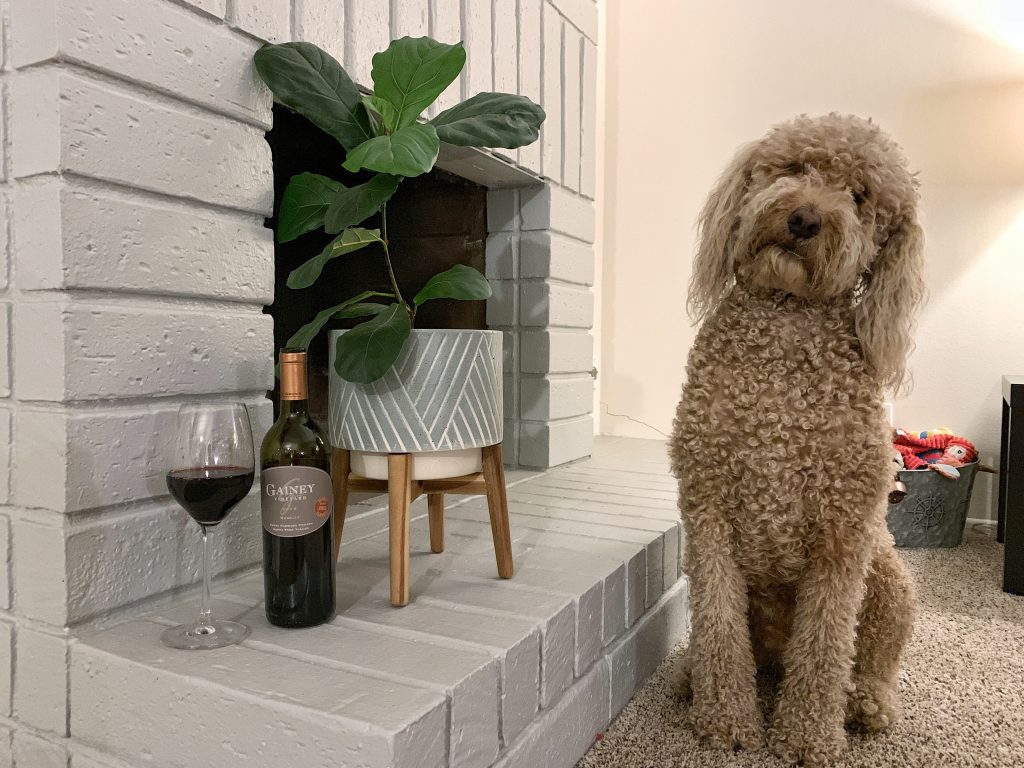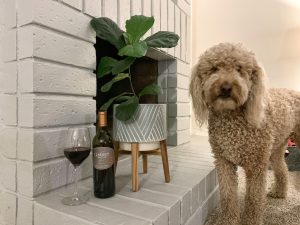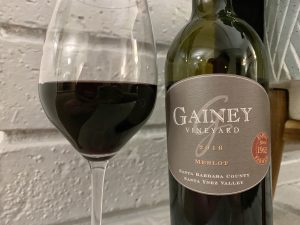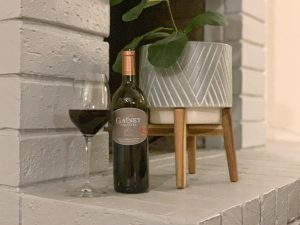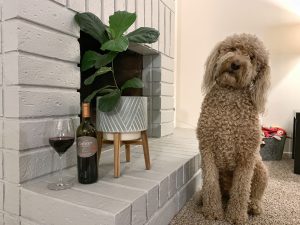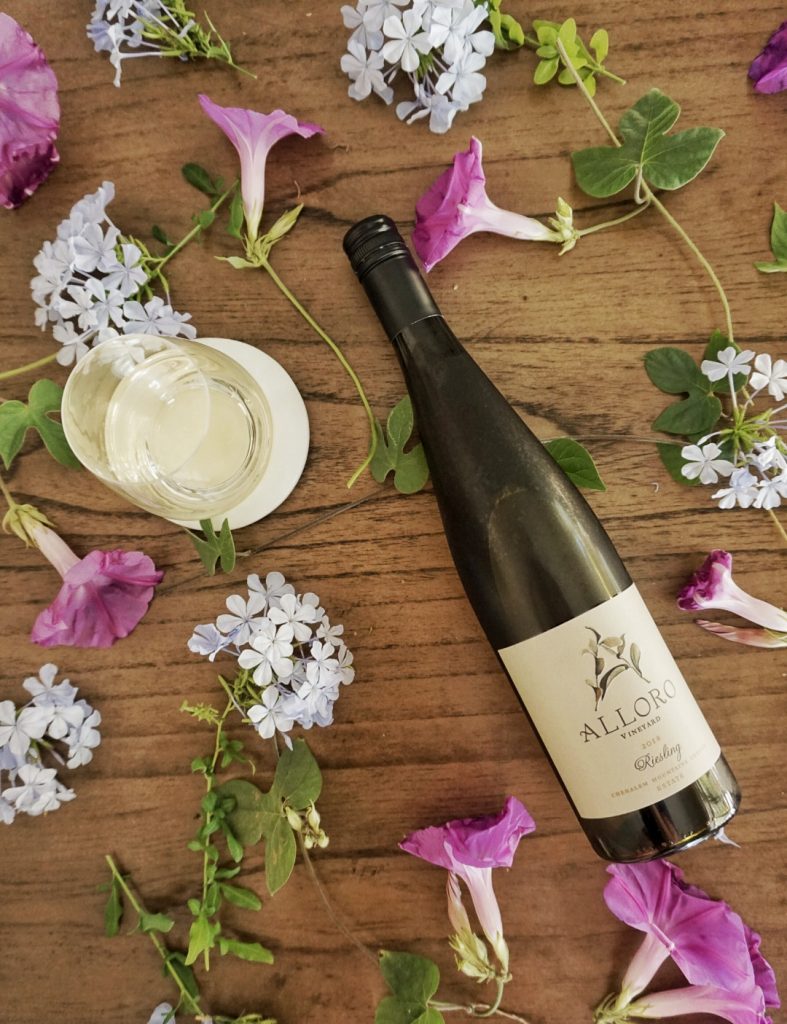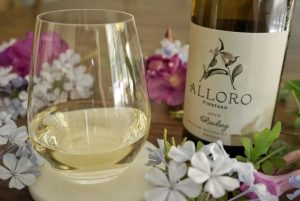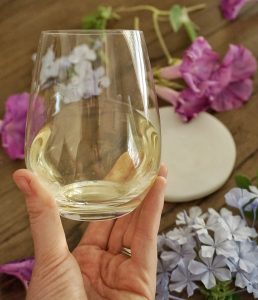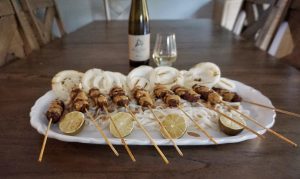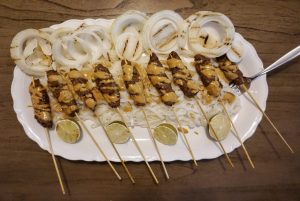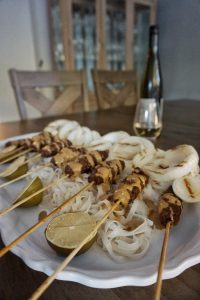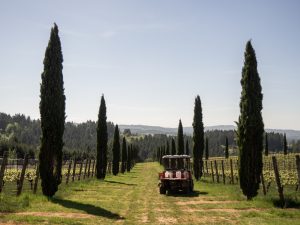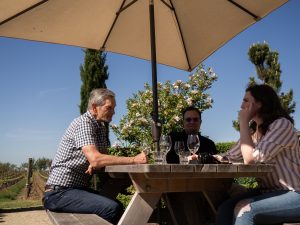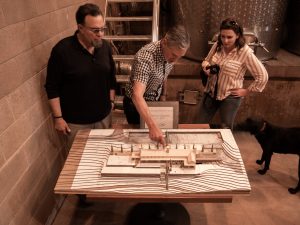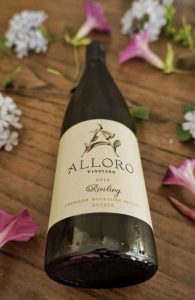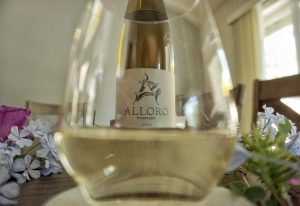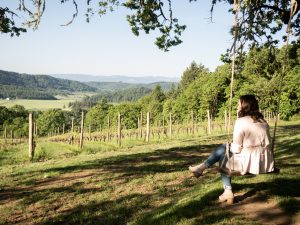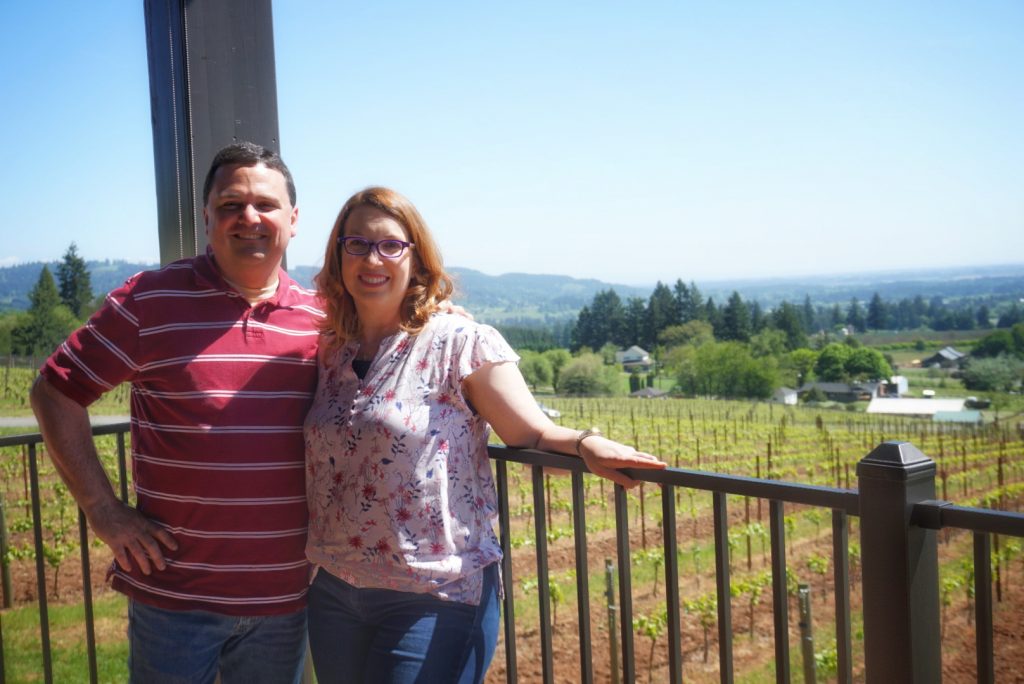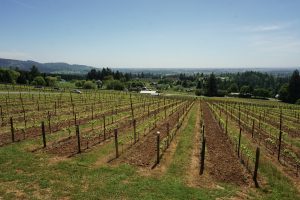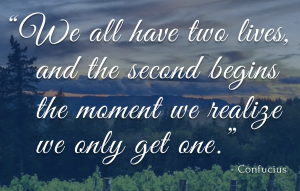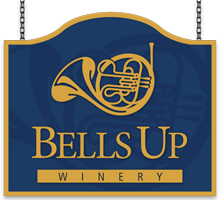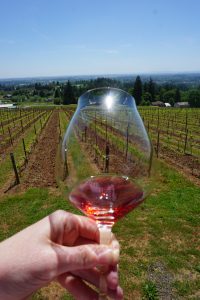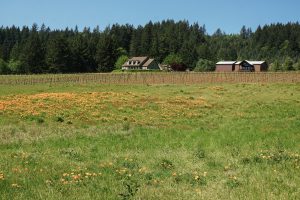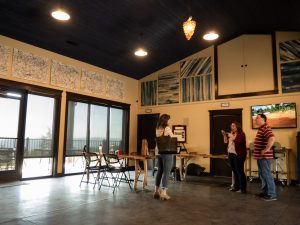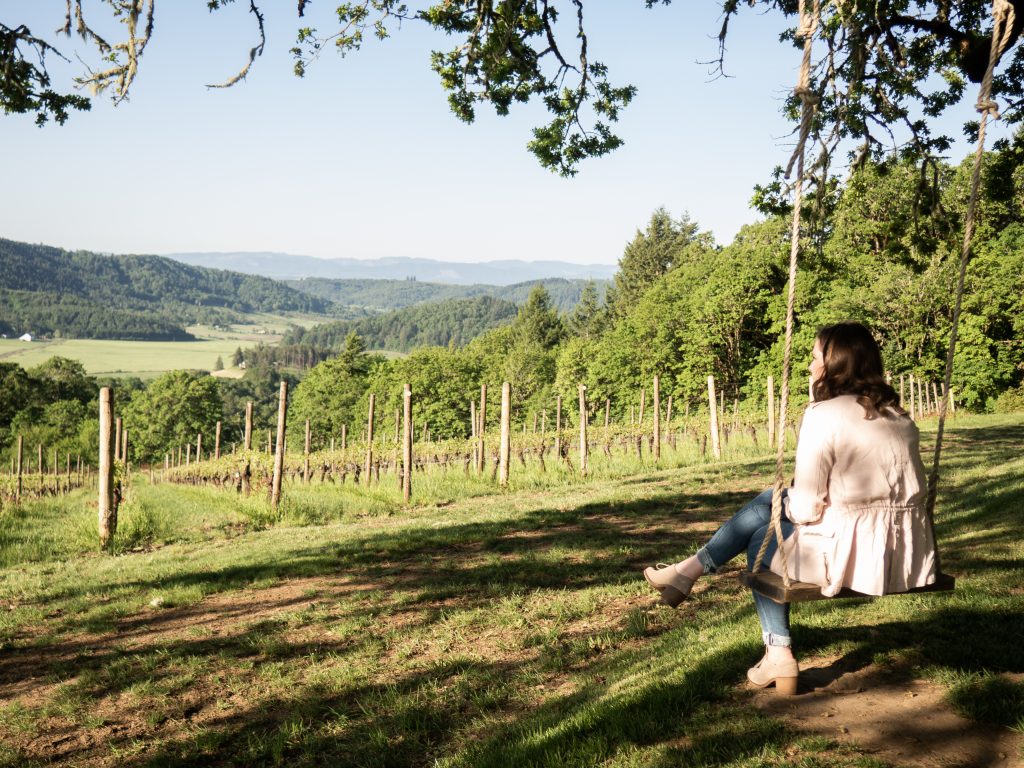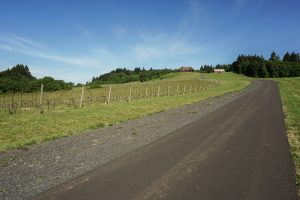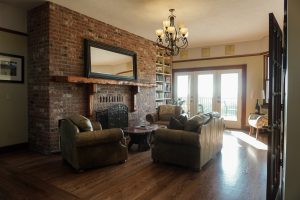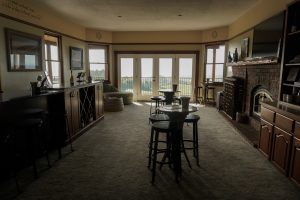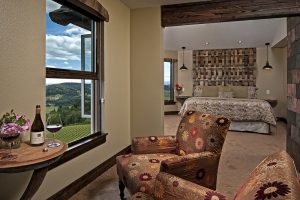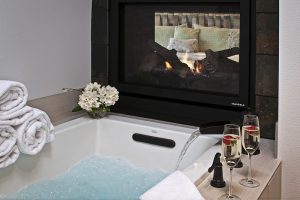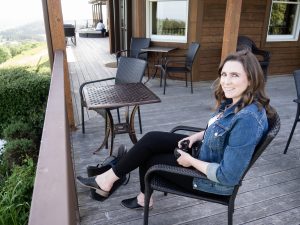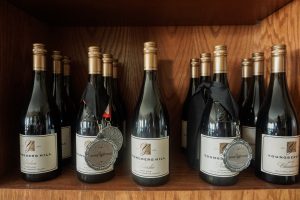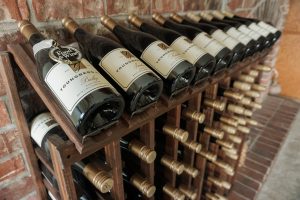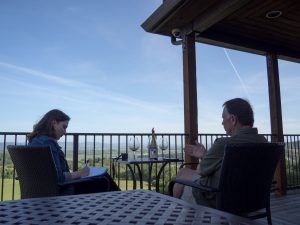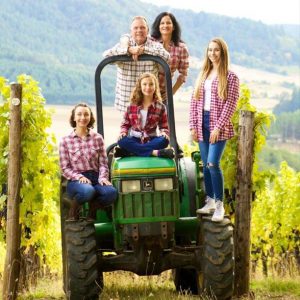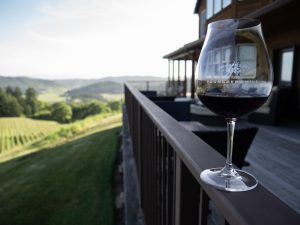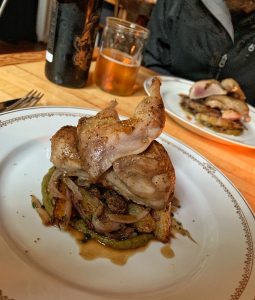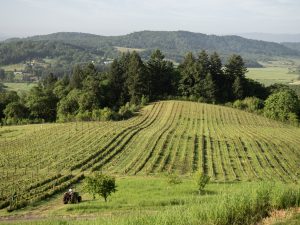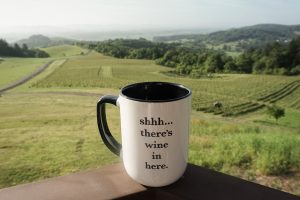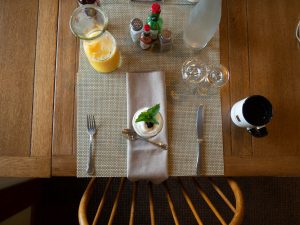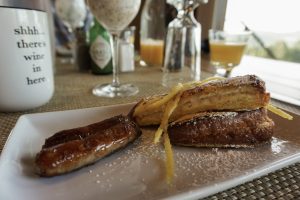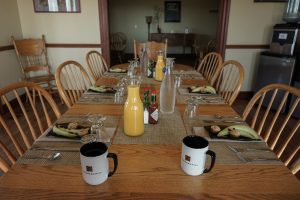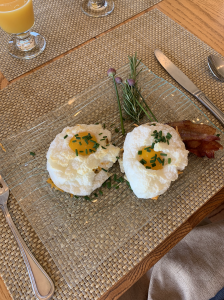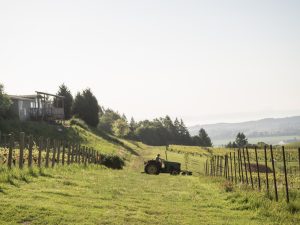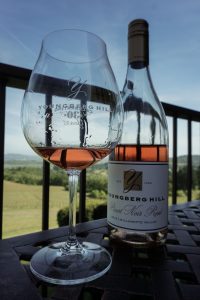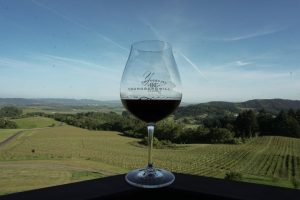I don’t know about you, but this hot summer weather has me craving white and rosé wines like never before.
My favorite bottles in the chilled wine category are the ones that go a step beyond “porch pounder” and pack a punch with both flavor and complexity. A standout wine that checks these boxes is the Bells Up Winery’s Prelude Rosé of Pinot Noir!
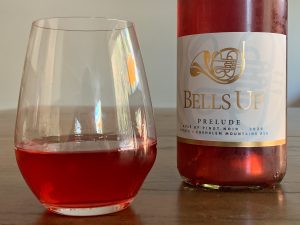
Last year I sampled the Bells Up 2019 Prelude Rosé of Pinot Noir. I paired it with my Mediterranean Farro Salad recipe during a live cooking class I hosted for Gerber Kawasaki. I also had the opportunity to sample the 2018 vintage when I visited Bells Up in Newberg, Oregon a couple years ago. Since that first sip in 2018, the Prelude Rosé has been a benchmark rosé wine for me.
I was excited to get my hands on a bottle of the 2020 vintage this year to compare tasting notes and create another food and wine pairing. I eagerly chilled, opened, poured, smelled, and sipped from a fresh glass of this ruby red rosé. Here’s what I found:
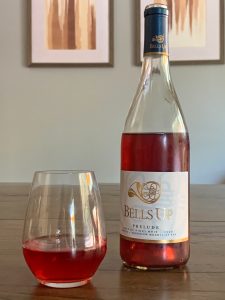
Color: Dazzling and ruby red as ever, the 2020 Prelude Rosé is certainly a standout in appearance.
Aromas: Strawberry distinctively hits your nose on your first whiff of the 2020 Prelude, followed by other red fruits such as raspberry and red cherry. Dried herbs serve as a backbone for the red fruits, along with a hint of baking spice and vanilla—likely imparted from oak aging. These aromas are tell-tale signs of a wine made from Pinot Noir!
Palate: Strawberry is once again the dominant red fruit on your palate, but it is supported by an abundance of other flavors such as cherry, raspberry, pomegranate, baking spice, and dried herbs. The herbal quality of the Prelude truly sets it apart from other rosés and points to its origin in the Willamette Valley—a region known for producing wines with a distinct earthy quality.
Body: The 2020 Prelude Rosé of Pinot Noir is a dry wine with high acidity, a light body, medium intensity, and a medium finish. It is complex in flavor and aroma, and pairs beautifully with food, especially my Grilled Ahi Nicoise Salad recipe that I created specifically for pairing with the Prelude Rosé!
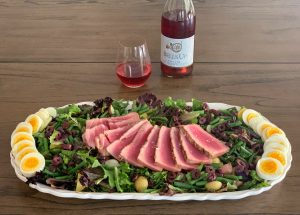
Why this pairing works:
As you can see from my tasting notes for the Prelude, the herbal quality of this rosé brings an earthy character that is not only unique, but provides a clear pathway to matching food flavors. In addition, the high acidity in the wine makes it food friendly, especially when paired with a meal that mimics the acidity level.
To me, Grilled Ahi Nicoise Salad is a perfect pairing, especially with my Dijon Herb vinaigrette. The addition of Herbs de Provence to the dressing subtly echoes the savory quality of the Prelude, while the Dijon mustard and freshly squeezed lemon juice bring the right amount of “tang” to your palate.
The best part of the Prelude and Grilled Ahi Nicoise Salad pairing is that they balance each other perfectly. Neither the food nor the wine overpowers the other. Even after finishing my salad, I could clearly pick up each of the individual aromas and flavors offered by the Prelude. Likewise, throughout my meal I could pick up subtle hints of lavender and thyme in the salad dressing. The fresh ahi, eggs, and vegetables serve as a perfect balancing act and palate cleanser, giving the wine time to shine.
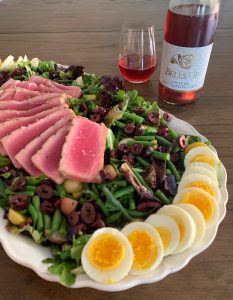
Learn more about wine and food pairing techniques by checking out my recent blog post all about it!
Grilled Ahi Nicoise Salad
Makes 4 entrée sized portions
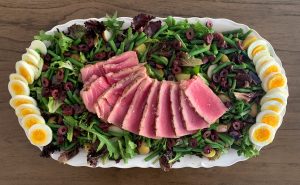
Ingredients
2 tablespoons Dijon mustard
2 tablespoons champagne vinegar
1 tablespoon freshly squeezed lemon juice
1 teaspoon kosher salt, plus more for seasoning
1 teaspoon black pepper, plus more for seasoning
1 teaspoon Herbs de Provence
2 cloves of garlic, minced
10 ounces mixed salad greens
1 pound fresh ahi tuna (this comes out to be about one large tuna steak)
4 eggs
12 ounces mini potatoes
8 ounces green beans
¾ cup Kalamata olives
2 tablespoons capers
Maldon sea salt flakes for garnish
Directions
- In a small mason jar with a lid, combine Dijon, vinegar, lemon juice, salt, pepper, herbs, and garlic. Close lid and shake well. Ta-da! You’ve just made your salad dressing.
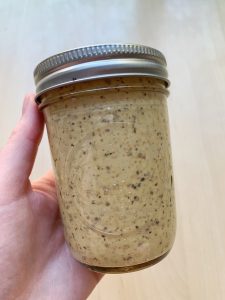
This is the best salad dressing trick in the book…quick, easy, and mess-free! - Add eggs to a pot and cover with cold water. Bring water to a boil. Once water begins boiling, set a timer for 6 minutes. At the 6-minute mark, transfer eggs to a bowl of ice water using a slotted spoon. Let eggs cool in ice bath for a few minutes before peeling the shells off the eggs. Set aside.
- Add 12 ounces of mini potatoes to the same pot of water used to boil the eggs. Top off water if needed. Boil potatoes until fork tender. Remove with a slotted spoon and set aside.
- Using the same pot of water (again!), steam the green beans. Place a steaming basket filled with green beans above the boiling water and cover with a lid. If you don’t have a steaming basket, you can cheat by using a metal colander. Steam green beans until they turn a bright green color and are tender but still have a crunch (about 4 minutes). Set aside.
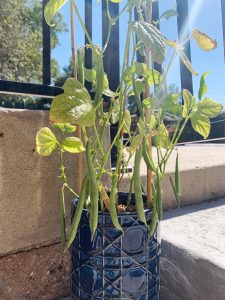
I’m very proud that some of the green beans used in this Grilled Ahi Nicoise Salad came straight from my garden! 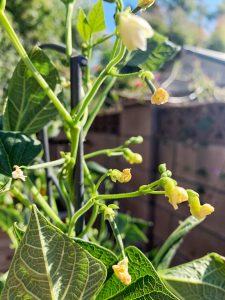
As you can see, there are lots more baby green beans on the way! Follow along on Instagram (@sips_n_tips) more more garden updates! - Pre-heat the barbeque for the ahi. Make sure the barbeque is hot to prevent the ahi from sticking. Coat the ahi with olive oil, salt, and pepper (to taste). Sear the ahi for 1-2 minutes per side. If you have a particularly thick ahi steak like mine, aim for 3-4 minutes per side. When finished, the ahi should be raw inside with grill marks on the outside. Remove from grill and set aside.
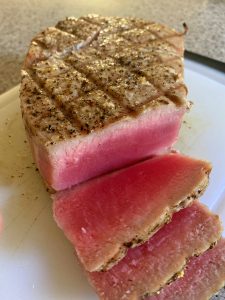
If you don’t have access to a grill, you can sear your ahi in a hot cast iron pan instead. I personally like getting the grill marks on my tuna steaks, plus the BBQ means easy clean up! - Prepare the salad ingredients. Cut potatoes into bite-sized pieces. Cut green beans into 1-inch pieces. Slice the Kalamata olives. Using a serrated knife, gently slice each of the hardboiled eggs.
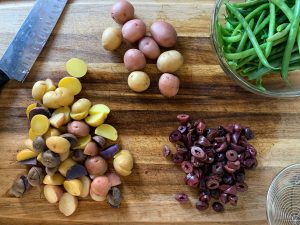
Salad toppings getting prepped and ready for their big debut. - Prepare the mixed greens. In a large salad bowl, combine the mixed greens and the desired amount of salad dressing. Toss to combine.
- Sprinkle 2 tablespoons of capers onto mixed greens and arrange the vegetables, eggs, and olives on the salad. Slice the grilled ahi tuna against the grain of the fish. Place your grilled ahi on the salad, garnish with Maldon sea salt flakes, and pair with a glass of Bells Up Prelude Rosé!
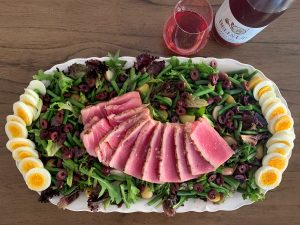
This food and wine pairing is perfect for a warm summer day.
The salad is light and healthy, and can be served in individual portions or on a serving dish (as pictured) if entertaining. The Bells Up Prelude Rosé of Pinot Noir will surely impress any crowd of wine lovers or connoisseurs. Be sure to have a few bottles on hand—you’ll be glad to have more once that first bottle runs out!
For all the wine geeks like me, here are the nitty-gritty technical notes for the 2020 Prelude Rosé:
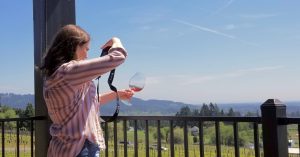
Production: 109 cases
Varietal & Clones: 100% Pinot Noir: 50% Pommard—7-year vines; 50% 667—7-year vines
Soils: Jory
Harvest date: October 3, 2020
Harvest Brix: 23.9
Cooperage: Aged 6 months in neutral French oak
Bottled: March 1, 2021
Released: March 15, 2021
Alcohol: 13.5%
pH: 3.20
If you haven’t already, head to the Bells Up Winery website and order a few bottles of wine to try for yourself.
The Prelude Rosé is obviously a favorite of mine, but you truly can’t go wrong with any bottle! Red wine lovers will appreciate the Titan Pinot Noir or the Firebird Syrah. White wine lovers will obsess over the mineral-driven quality of the Helios Seyval Blanc and the Rhapsody Pinot Blanc. By ordering a bottle (or five) from Bells Up, you’ll be supporting a micro-boutique, small-production, high-quality, family-owned business that is driven by nothing more than Dave and Sara Specter’s passion for creating and sharing fine wine.
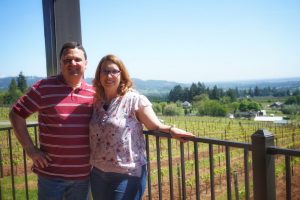
If you happen to visit the Willamette Valley (which I HIGHLY recommend), stop by the Bells Up tasting room, where you will be guided through a private tasting while overlooking the Bells Up vineyard. One-on-one private interactions are the only way that Bells Up has ever operated, and it is a treat to learn about the wines directly from the family that makes them!
Cheers—happy cooking and happy sipping!
If you tried this recipe or enjoyed this post, let me know in the comments below and share on social media!
Grilled Ahi Nicoise Salad
Ingredients
Method
- In a small mason jar with a lid, combine Dijon, vinegar, lemon juice, salt, pepper, herbs, and garlic. Close lid and shake well. Ta-da!You’ve just made your salad dressing.
- Add eggs to a pot and cover with cold water.Bring water to a boil. Once water begins boiling, set a timer for 6 minutes. At the 6-minute mark, transfer eggs to a bowl of ice water using a slotted spoon.Let eggs cool in ice bath for a few minutes before peeling the shells off the eggs. Set aside.
- Add 12 ounces of mini potatoes to the same pot of water used to boil the eggs. Top off water if needed. Boil potatoes until fork tender. Remove with a slotted spoon and set aside.
- Using the same pot of water (again!), steam the green beans. Place a steaming basket filled with green beans above the boiling water and cover with a lid. If you don’t have a steaming basket, you can cheat by using a metal colander. Steam green beans until they turn a bright green color and are tender but still have a crunch (about 4 minutes). Set aside
- Pre-heat the barbeque for the ahi. Make sure the barbeque is hot to prevent the ahi from sticking. Coat the ahi with olive oil, salt, and pepper (to taste). Sear the ahi for 1-2 minutes per side. If you have a particularly thick ahi steak, aim for 3-4 minutes per side. When finished, the ahi should be raw inside with grill marks on the outside. Remove from grill and set aside.
- Prepare the salad ingredients. Cut potatoes into bite-sized pieces. Cut green beans into 1-inch pieces. Slice the Kalamata olives. Using a serrated knife, gently slice each of the hardboiled eggs.
- Prepare the mixed greens. In a large salad bowl,combine the mixed greens and the desired amount of salad dressing. Toss to combine.
- Sprinkle 2 tablespoons of capers onto mixedgreens and arrange the vegetables, eggs, and olives on the salad. Slice thegrilled ahi tuna against the grain of the fish. Place your grilled ahi on thesalad, garnish with Maldon sea salt flakes, and pair with a glass of Bells UpPrelude Rosé!

